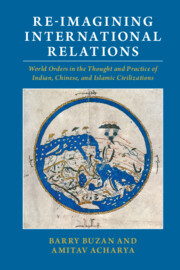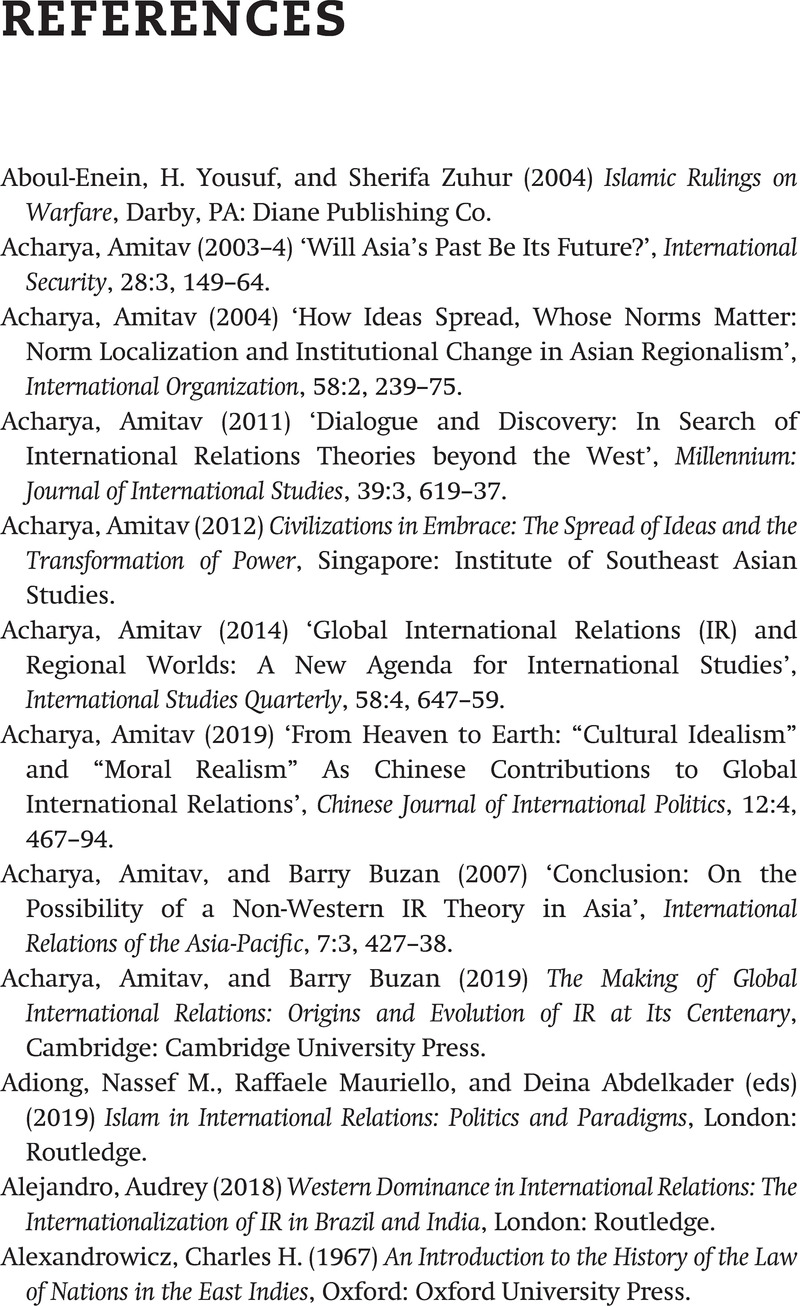 Re-imagining International Relations
Re-imagining International Relations References
Published online by Cambridge University Press: 02 December 2021
Summary

- Type
- Chapter
- Information
- Re-imagining International RelationsWorld Orders in the Thought and Practice of Indian, Chinese, and Islamic Civilizations, pp. 161 - 175Publisher: Cambridge University PressPrint publication year: 2021


